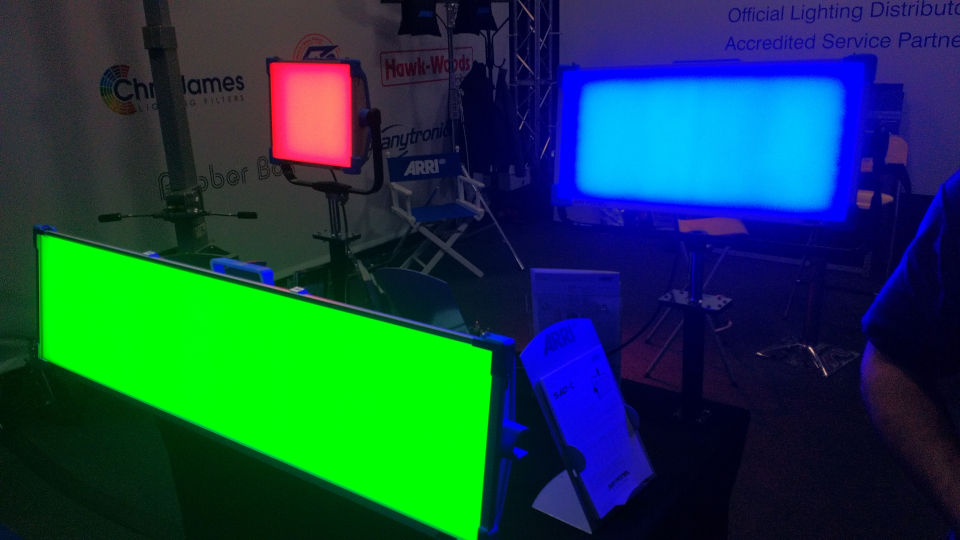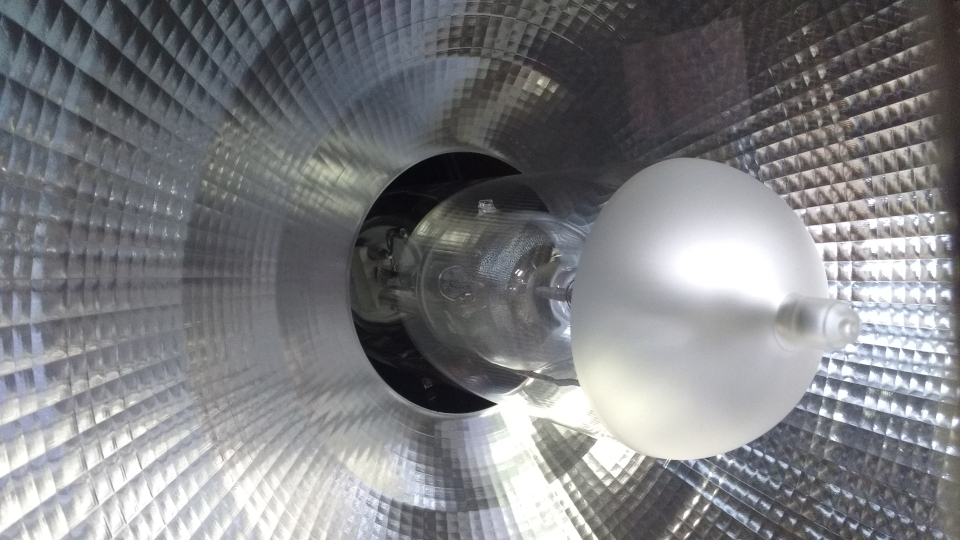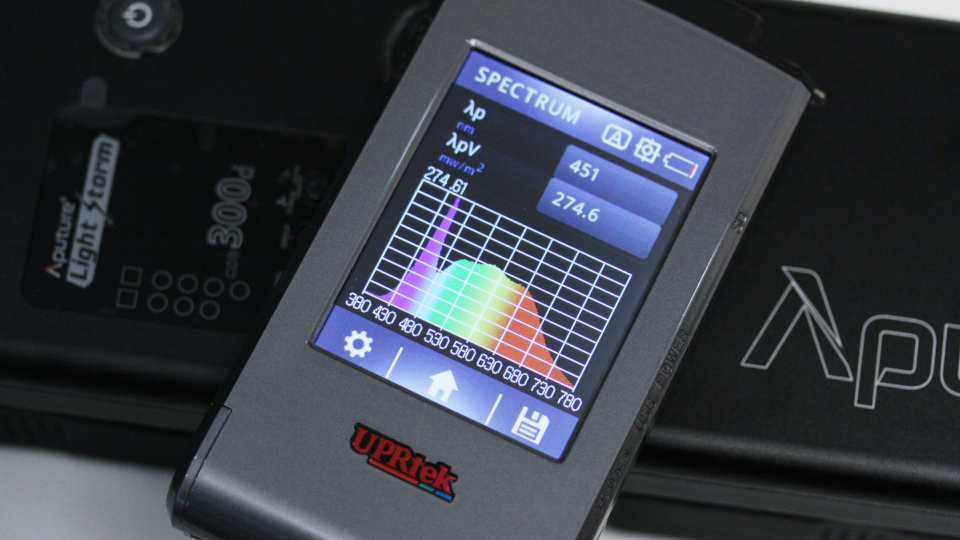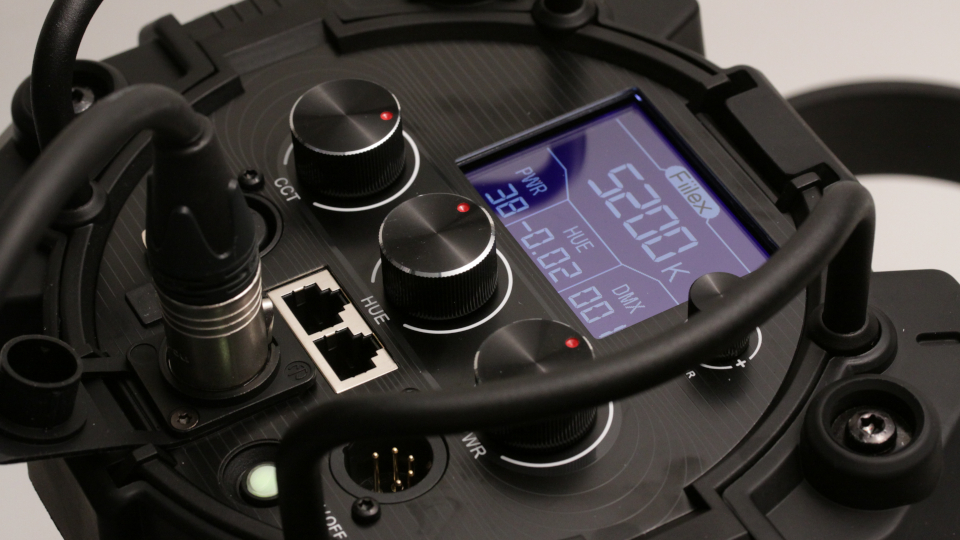Despite the Hype, LEDs Haven’t Revolutionized Broadcasting
When LEDs began to take over from old-style light bulbs in homes and businesses, the film industry looked on in awe. The mathematics were impossible to ignore: at a conservative estimation, these new light sources produced four or five times as much light as the traditional technology for the same power? And despite some early uncertainty over color rendering, it’s now reasonably easy to obtain lights that fulfill that early promise to at least some degree.

Over roughly the same period of time, we’ve also seen camera sensitivity increase greatly. Film never really got much faster than ISO 500 — there was some 800 but it was grainy, perhaps so grainy that people preferred to push-process the 500 and end up in much the same place. Now, with Panasonic's Varicam 35 at the high end and the Sony A7 series still cameras for everyone else, it’s possible to shoot at very high ISOs with reasonable noise performance. In an emergency, usable pictures can be shot at several thousand ISO, give or take the fact that “usable” is a matter of opinion.
DON’T ROCK THE BOAT
That heady combination of more efficient lights and faster cameras should have revolutionized camerawork, and yes, it’s hard to object to the fact that things like sit-down interviews can now be done on battery power. Even so, crews on high-end productions still reach for 18 kW HMIs to light night exteriors in the same way they have for decades. Why do they do that? Well, nobody wants to be responsible for rocking the boat when the camera and light budget is such a small financial part of big productions. The fear of problems with new tech easily outweighs the desire for savings, and that’s slow to change.
[Read: Lighting For Open Locations]
But technical conservatism can’t explain everything. Is it possible that people still use big traditional lights because there is genuinely no LED that will do the job of an 18 kW HMI? The Mole Tener LED, a 1600 W device, is probably the highest-powered LED around, and as the name suggests, it’s intended to replace a 10 kW tungsten halogen device. For that to work, the LED would need to be more than six times as efficient as the tungsten halogen light, which is plausible, because LEDs exceed the efficiency of tungsten halogen hugely. But how do they compare to HMI?

It’s a contentious comparison partly because salesmanship is involved, but also because LED and HMI exist in wildly different power levels and housing styles. Mole's Tener is a real monster, and not very typical; LEDs in 2018 are usually rated at a few hundred watts. Common devices include Arri’s 400 W Skypanel S60 series, the 300 W Aputure COB-300D, or the Fiilex Q1000, at 340 W. HMIs cross over with this range to some extent, but while 200 W HMIs exist, the smallest common unit is 575 W and they go all the way up to 24,000 W. HMI begins where LED ends, and it’s a different world entirely.
The ways in which we direct and focus light also makes a difference. An HMI bulb emits light in more or less all directions, while an LED emitter can be built to work in a wide variety of ways. Both devices may need reflectors and lenses which can be more or less effective at pushing light in a useful direction, and the losses involved in doing that vary with different technologies. The traditional Fresnel is very controllable, for instance, but sacrifices a lot of efficiency — an HMI globe in a Fresnel is blasting most of its output into the inside of the housing, not onto the scene. LED Fresnels often use a reflector designed to capture more of the emitter’s output and fire it through the lens. They may be more optically efficient but can produce less well-defined shadows.
APPLES AND ORANGES
So the relationship between power input, light output, and the behavior of a light make things complicated. Comparing technologies is therefore an inexact science, though there are some basic numbers that are useful so long as they’re interpreted with those complexities in mind. HMI, for instance, emits something like 100 or 105 lumens of light per watt energy consumed, and it isn’t a particularly up-to-date or recent technology, having been developed in the 1960s. LEDs have achieved twice that in the lab, but any LED with good color rendering will probably be down around 120 lumens per watt — maybe 20 percent better than HMI or fluorescent.

So, LED lights are actually barely more efficient than HMI and aren’t available in nearly such high power levels. They’re generally nowhere near replacing the biggest HMIs, even if we take into account that two- or three-stop increase in camera sensitivity. If we assume that cameras are two stops faster than perhaps a decade ago (for equivalent noise performance) and the average LED is 200 W, that only works out to the equivalent of an 800 W light. That still isn’t enough to backlight a big night exterior on a city street. Has all this been a waste of time, then?
Certainly not. It’s made life a lot easier for what we might call “productions on the boundaries.” A small production which might have just about stretched to a 6 kW HMI, a generator and an ISO 500 camera can now shoot at ISO 1250 and get similar results from an LED that can be run from the wall. Avoiding the generator and the crew it saves a huge amount of money. Similarly, productions which might have spent time running in mains cables to light a simple interview can probably do it entirely on battery power now, saving mainly time, and, therefore money as well. Huge productions still need generators; medium-sized ones might not quite be able to go entirely off-grid and work with batteries, but there are productions on the edges of those definitions which will find their lives becoming easier. That’s progress.

It’s just not a revolution. If LED lighting has a killer application, it’s probably the creation of large scale soft lights, where a product such as Aladdin’s Fabric Light can be rigged directly into a diffusion frame. It’s far faster to set up than the traditional Fresnel and diffusion fabric, but it’s also far more powerful because it’s much more efficient than firing light through a filter, which can result in as much bouncing back as passes through. Small, battery-powered lights are hugely useful. In these situations, LED works beautifully. Otherwise, it’ll be a while before power levels creep up enough to change the exposure equation for everyone. It’ll happen, but it will take time, and that’s probably no bad thing in a field where experience is hard-won.
Get the TV Tech Newsletter
The professional video industry's #1 source for news, trends and product and tech information. Sign up below.
